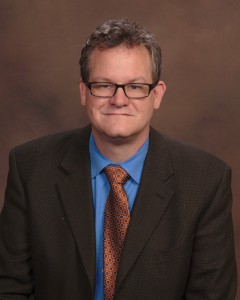CLAS 300
Taught by: J. Bert Lott
 The Course Oldmoney began with the discovery of an unstudied collection of around one thousand Greek and Roman Coins in the Francis Lehman Loeb Art Center. I saw the collection both as an outstanding resource for teaching and as an opportunity for scholarship and service cataloguing and publishing it.
The Course Oldmoney began with the discovery of an unstudied collection of around one thousand Greek and Roman Coins in the Francis Lehman Loeb Art Center. I saw the collection both as an outstanding resource for teaching and as an opportunity for scholarship and service cataloguing and publishing it.
As a course, Oldmoney was grounded in a commitment to fostering learning in which students construct knowledge for themselves. Since Oldmoney was an ongoing scholarly project as well as a course, I focused on discovery-based learning or constructivist learning techniques that encourage students to build intellectual structures and discoveries for themselves. Oldmoney was a hybrid course by design, combining extensive use of an electronic database to give students virtual access to the entire collection with to work on a smaller number of actual physical pieces. Students worked collaboratively to identify and catalogue coins that had not been previously studied; they used the collection to analyze aspects of current numismatic research; and they prepared virtual museum exhibits to organize and present the coins on which they had worked.
The Technology
Using a generous grant from the Robert Lehman Foundation, I prepared a digital project that combines students’ analytical work from a class on ancient numismatics with a searchable scholarly catalogue of the entire collection. The scholarly portion of the Oldmoney project is a relational database that captures relevant metadata (based on the DublinCore standard), identifies the coins in standard scholarly resources, describes them in detail in accordance with numismatic practice, and offers images of every piece. Although it follows the traditional criteria of numismatic catalogues, the primary value of the project is not as a “flat” listing of the coins in the FLLAC. Rather it is a searchable catalogue of the collection that enables users not just to browse or look for individual pieces but to easily construct complex subsets of the collection.
 The Student Response
The Student Response
In the end, Oldmoney improved the students’ conceptual learning, gave them first hand experience in the rigorous processes of intellectual activity with no safety net, and allowed them to experience the wonder and thrill of the discovery of new information about the past. The student response was positive, and mostly focused on the increased (virtual) access to the entire collection. From their standpoint, the increased search functionality was not apparent because they had not worked with numismatic literature before. Accessibility through new resources to a broader range of disciplinary materials is certainly a general benefit of new technologies equal to that of increased/changed functionality.
The Challenges
We had to build the technical skills for students to participate in building their own exhibits; we had to think both about what a museum exhibit is and about how the “virtual” environment might affect the exhibits for this course; and we had to practice working with a large body of evidence rather than a small discrete set.
I would also point to the challenge of assessing student work in new media. The need to construct interactions with students in assessable ways permeates every aspect of teaching, and the problems of successfully evaluating and grading student work in new media has caused significant resistance in Humanities faculty to adopting new media requirements in class. The assessment of student multimedia work is an area where I continue to work toward successful practices, without sacrificing my commitment to assigning meaningful work in new media.”
New Directions
I am much more interested in the disciplinary and pedagogical questions raised by new (technical) information resources and by the rate of change of technical resources than in technology per se. To this end, I am teaching a seminar next semester for Classics and Media Studies, “Ancient Societies New Media: The History and Historiography of Antiquity in the Digital Age.” This course examines the use of new technologies and new media to study the history of Classical antiquity in order to better understand both the changing craft of the historian (what it means to “do history” today) and the particular contribution that new technologies are making to our knowledge and understanding of the ancient world.
